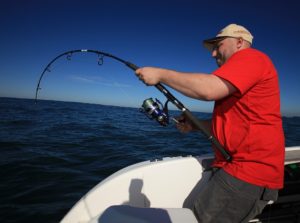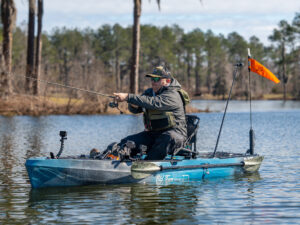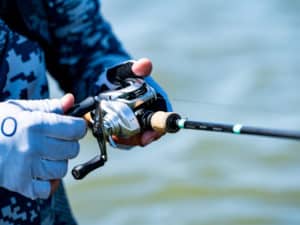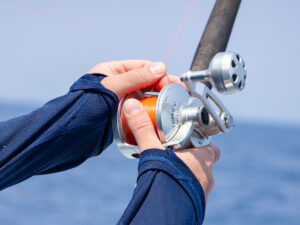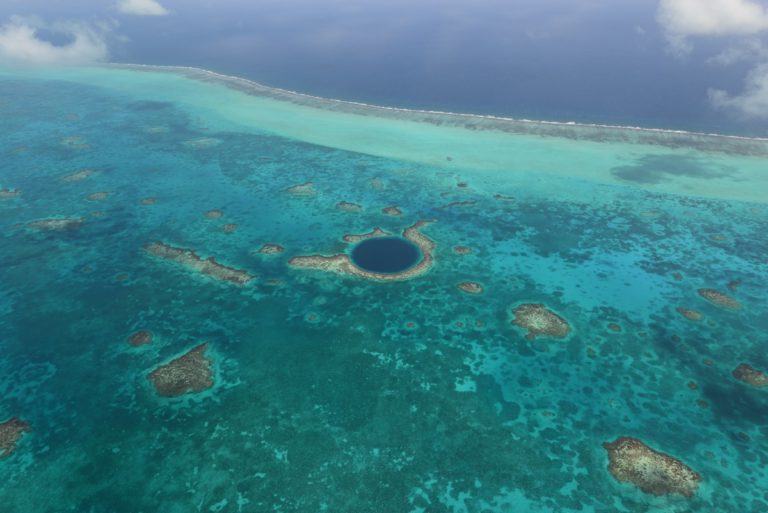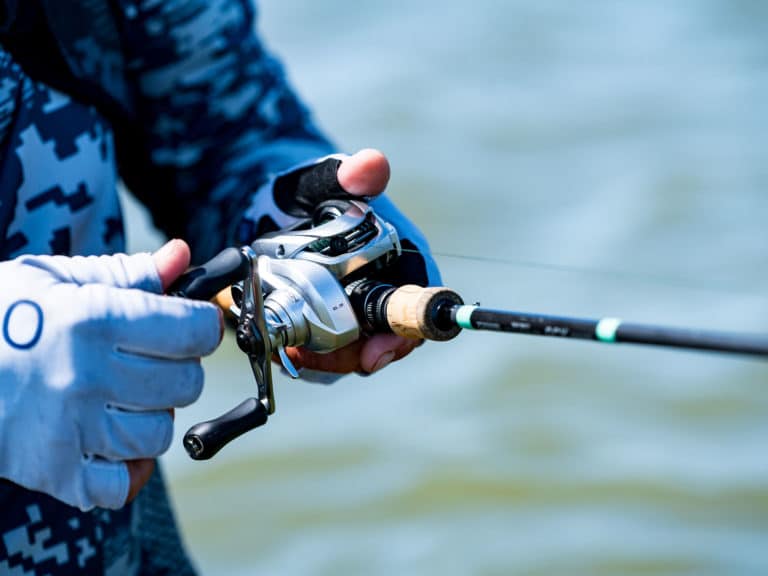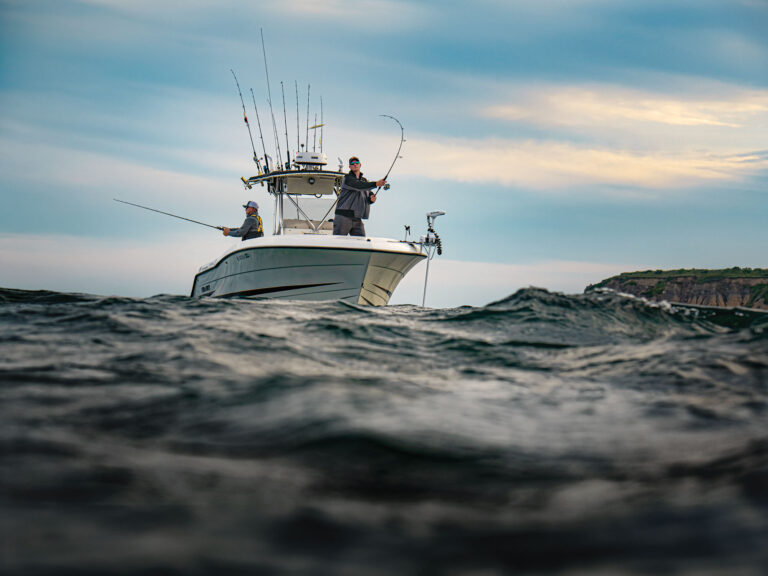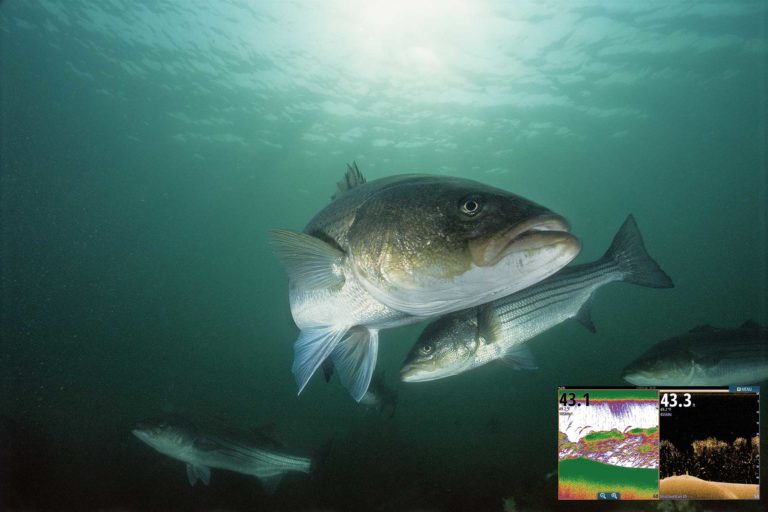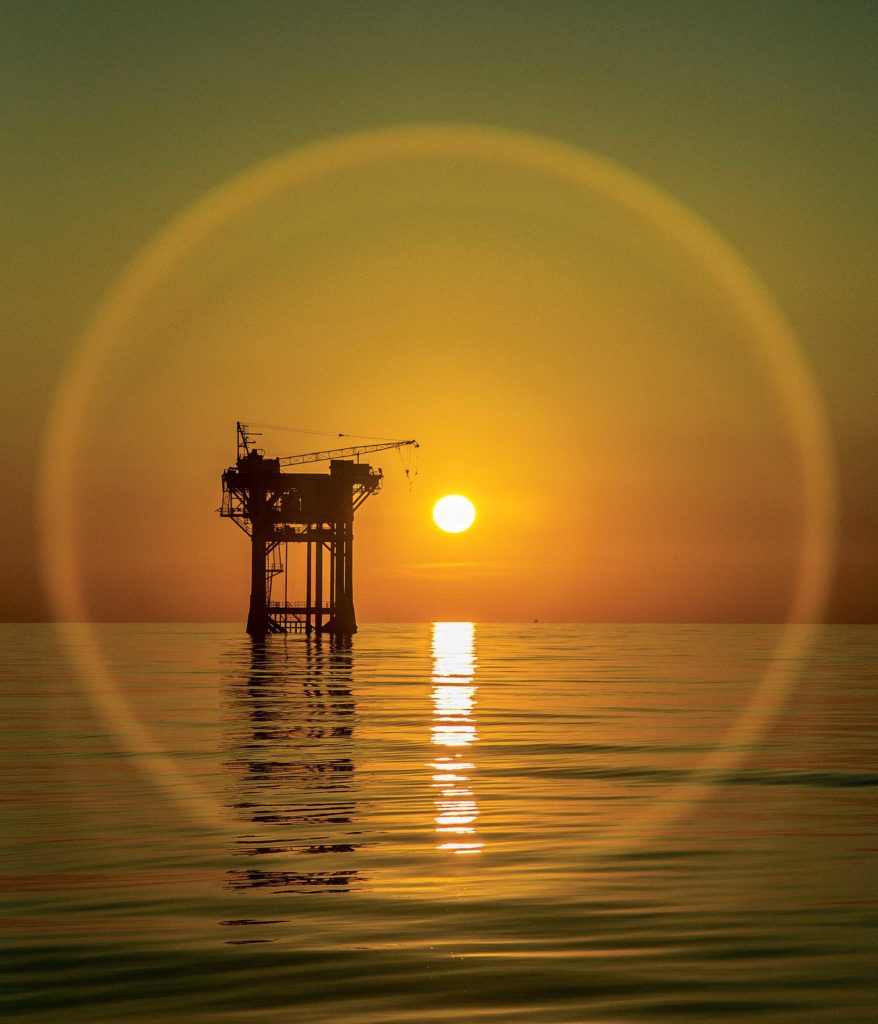
Protection from the sun’s dangerous rays is vitally important for anglers. Not only do we spend more time outdoors than most people, we’re on the water, which reflects those rays back at us, as do fiberglass boat decks.
Applying sunscreen to exposed body parts is an essential part of avoiding sunburned skin and skin cancer. Many fishermen wear hats and long-sleeved shirts with an ultraviolet protection factor of 30 or 50, and they’ll put sunscreen on their face, ears, legs, and the tops of their hands. What brand of sunscreen often doesn’t matter to them, but they tend to prefer products of 30 to 50 SPF, which stands for sun protection factor. UPF relates to clothing or fabric, and SPF to topical lotions.
However, recent trends in sunscreen formulations, along with legislation banning certain types of sunscreens, should have anglers rethinking their choices. Testing has revealed that some chemicals in sunscreens that absorb ultraviolet rays can contribute to the bleaching of coral reefs, and also kill coral larvae as well as saltwater and freshwater fish and fish embryos.
In 2018, Hawaii approved a ban on the sale of sunscreens that contain oxybenzone and octinoxide, found in many popular sunscreen brands and harmful to coral. The law takes effect January 2021. The Caribbean island of Bonaire, a popular scuba diving destination, instituted a ban on sunscreens with those chemicals that also takes effect January 2021.
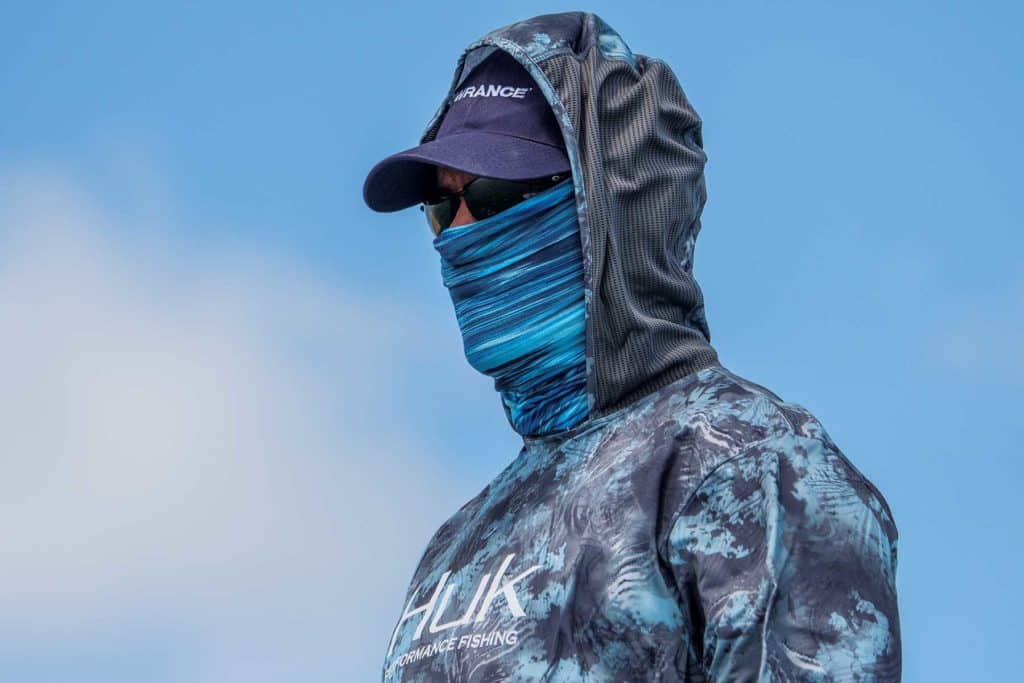
Coral-Reef Concerns
Autumn Blum is a cosmetic chemist and founder and CEO of Stream2Sea, whose products include reef-safe mineral sunscreens. She grew up in Sarasota, Florida, and started an herbal skincare company at age 23 after graduating college with a degree in chemistry with a concentration in environmental geology. She sold that company in 2009 and stayed on as a consultant for four and a half years before launching Stream2Sea in 2015 in Wauchula, Florida.
An avid diver, Blum’s motivation came during a trip on a liveaboard dive boat in a pristine location. She noted that after divers came out of the water, they rinsed off, applied sunscreen, took a break, then went back in the water for their next dive still wearing that sunscreen.
She started reading the sunscreen labels to see what was in them and realized that some of the chemicals were not good for the reefs they were diving. So she told herself she could do better. As she says, “Ingredients that are safe for people are not necessarily safe for fish and coral larvae.”
The first thing she did with her sunscreen prototypes was to test the ingredients to ensure that they wouldn’t harm fish and coral. The studies were done with her products, a competitor’s product and a control group. Stream2Sea had almost zero effect on the swimming and feeding behavior of fish, and did not cause any fish deaths. Other sunscreens killed fish in tests performed at Eckerd College in St. Petersburg, Florida. She also tested her products and competitor sunscreens on coral larvae, and the results were similar.
Her brother Darren loves to fish, and when he asked her how sunscreen on a fisherman’s hands affects live bait, they ran the same testing protocol with three bait tanks. After the hands with a competitor’s sunscreen were dipped into a tank, Blum says the baitfish were swimming upside down and bumping into the walls of the tank.
“So many things affect fishing and the reefs,” says Blum, whose sunscreens are available in SPF 20 and 30, and are sold in retail stores as well as at stream2sea.com. “If there’s something you can do, why not do it?”
Read the Ingredients
Anglers should take a hard look at what’s in the sunscreens they’re considering. Blum points out that some sunscreens labeled reef-safe or reef-friendly have replaced oxybenzone with avobenzone, which photodegrades with exposure to sunlight. Photodegradation increases free radicals in the skin, which can increase the risk of skin cancer. Many sunscreens also contain octocrylene, a synthetic UV absorber and SPF booster that can cause allergic reactions in sensitive skin and has been shown to bio-accumulate in the body.
Stream2Sea sunscreen features 6.6 or 8.8 percent non-nano titanium dioxide, which reflects ultraviolet rays, and does not harm fish and coral. “I chose titanium because it’s the most stable of all the elements,” Blum says.
Most other reef-safe sunscreens feature uncoated zinc oxide, which reflects UV rays and appears to offer no environmental threat.
Badger (badgerbalm.com) has an SPF 35 Sport sunscreen with just five ingredients: 22.5 percent non-nano uncoated zinc oxide, sunflower seed oil, beeswax, jojoba seed oil and sunflower vitamin E.
Tropical Seas Inc. (reefsafesun.com) makes Land Shark SPF 30 Sunkissed mineral-based sunscreen that has 7.5 percent zinc oxide and 3.2 percent titanium oxide. It also has extracts of algae, dandelion leaf, ginseng root, kelp, lavender and lemon grass. The company’s reef-safe oxybenzone-free SPF 30 sunscreen has octylcrylene (not to be confused with more harmful octocrylene), octisalate and avobenzene. The website says the formula has been tested by Mote Marine Laboratories, is nontoxic to sea life, and won’t kill or contaminate bait.
The Sawyer (sawyer.com) Stay-Put SPF 50 sunscreen features what the company calls a Breathable Matrix Formula that penetrates into all layers of the skin so sweat passes over the sun-blocking compounds. They include 2.6 percent titanium dioxide, plus oxybenzone, octinoxate and octisalate.
Neutrogena (neutrogena.com) bills its Ultra Sheer products as “the most awarded sunscreen ever.” Ultra Sheer is available in four water-resistant products: dry-touch lotion, body mist, liquid and a face-and-body stick, all in SPFs ranging from 30 to 100-plus. But the sunscreen ingredients include avobenzone, homosalate, octisalate, octocrylene and oxybenzone. Another alternative is Neutrogena’s SPF 50 Sheer Zinc dry-touch sunscreen that is 21.6 percent zinc oxide.
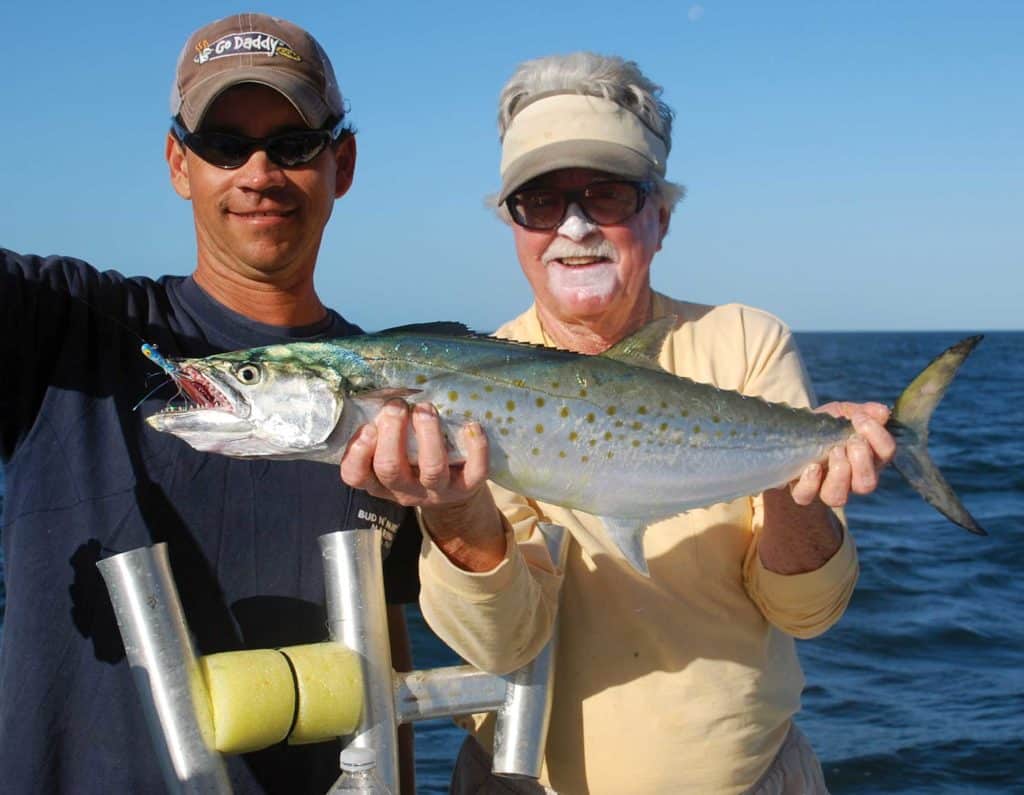
Sunscreen Tips
Is a higher SPF more effective than a lower one? Not enough to make a difference. Experts say to use sunscreen of at least SPF 15, which blocks 93 percent of ultraviolet B—or UVB—rays, which cause sunburn and skin cancer. SPF 30 blocks 97 percent of UVB rays, and SPF 50 blocks 98 percent.
“SPF is not a factor of protection; it’s a measure of time,” Blum explains. If your skin can be exposed for 10 minutes in the sun without burning, then SPF 15 sunscreen would allow you to go 150 minutes without burning, and SPF 30 sunscreen would provide 300 minutes of coverage, and so on. But, scientists recommend reapplying sunscreen after two hours of sun exposure no matter the SPF strength. Sunscreen manufacturers advise reapplying their products after 80 minutes of swimming or sweating.
Read Next: High-Tech Shirts Keep Anglers Cool
Some people put so much zinc-oxide sunscreen on their faces that they look like mimes. Most manufacturers recommend using only as much as really necessary.
Broad-spectrum sunscreen means that it protects against both UVB and UVA rays. UVA rays tan, age and wrinkle skin. Sunscreen that promotes itself as being PABA-free is a marketing tool. Virtually all sunscreens no longer have para-aminobenzoic acid as an ingredient, so promoting that is like saying your oven mitts are asbestos-free.

